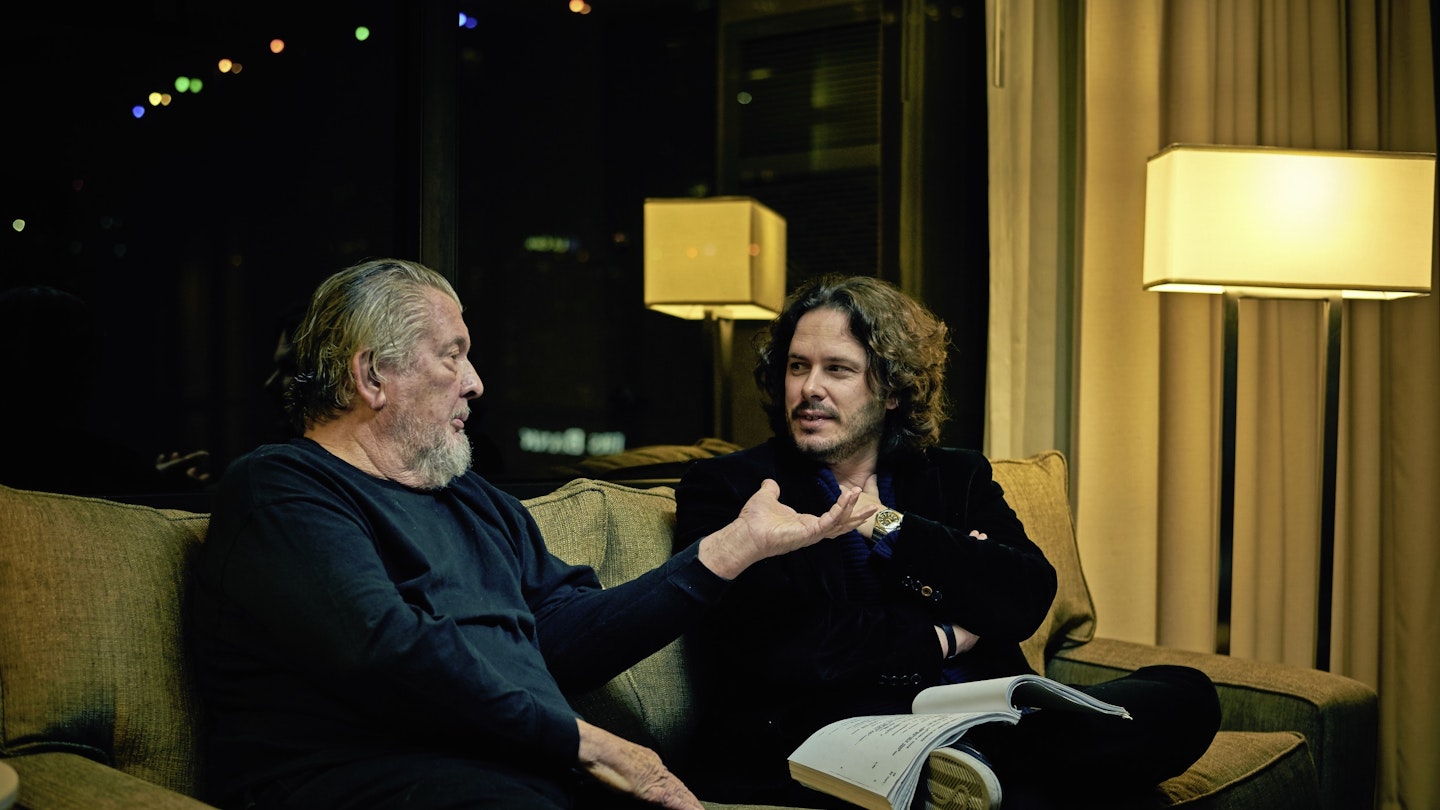This article first appeared in the February 2017 issue of Empire
The man behind this summer’s Baby Driver talks to the man behind cult 1978 car-chase thriller The Driver. Edgar Wright and Walter Hill, start your engines...
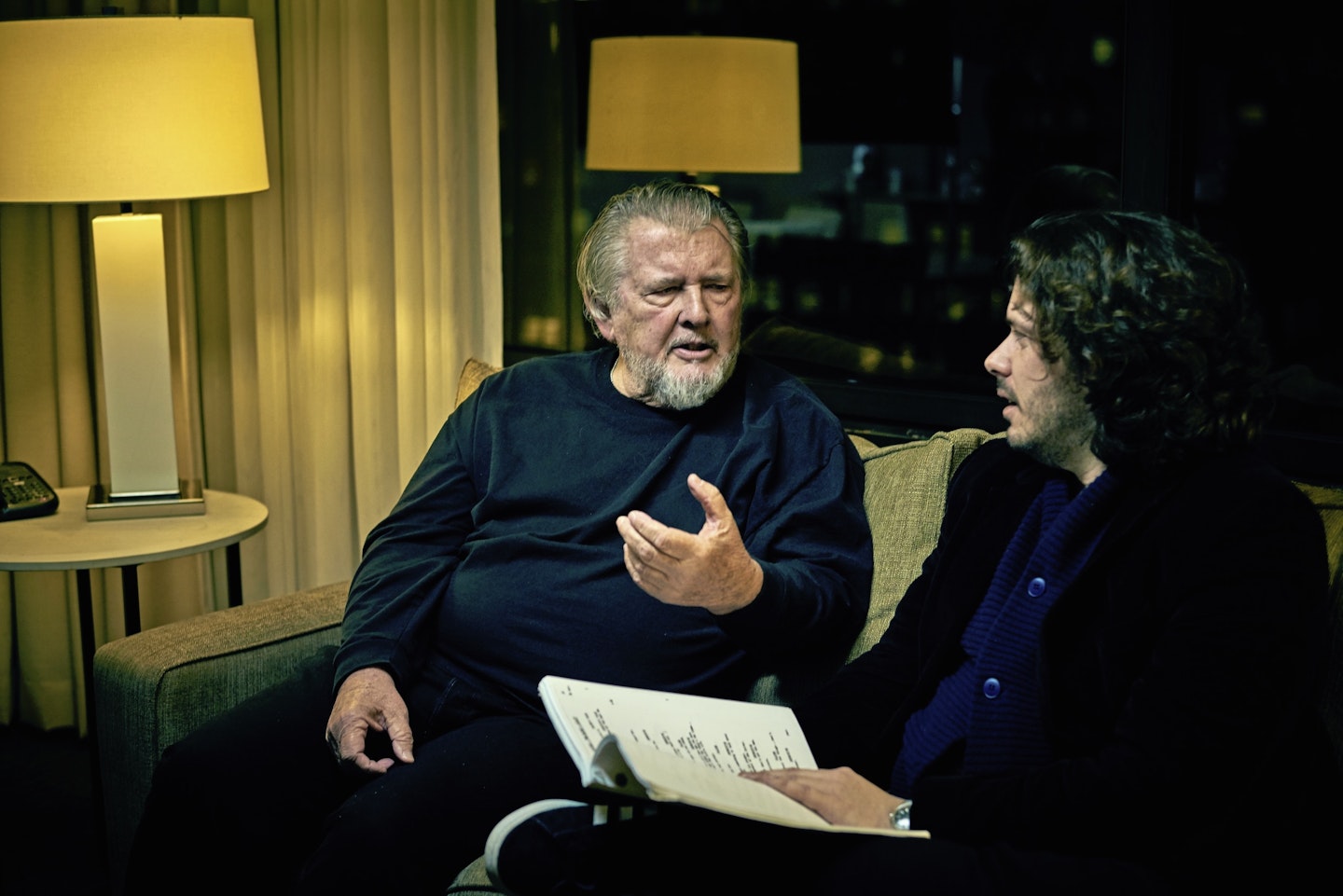
Edgar Wright: I first saw Walter Hill’s second film, The Driver, as a teenager, late at night on the BBC, quite possibly sitting too close to the telly. Given that this 1978 slice of neo-noir takes place almost entirely in the dark streets of a deserted downtown LA, it’s really a perfect midnight movie. I discovered it through having enjoyed Walter’s later successes, 48 Hrs. and The Warriors, and because of a short Leonard Maltin review that stated it had ‘great car chases’. That was more than enough to convince me to stay up and watch it on a school night. But 91 minutes later I was totally spellbound by this diamond-tight, minimalist masterclass, which stars Ryan O’Neal as a getaway driver (known only as The Driver) and Bruce Dern as the cop (known as The Detective) out to get him. Its influence on video games is very clear and in movies its style has echoed throughout the work of Michael Mann, James Cameron, Quentin Tarantino, Nicolas Refn and now me with my new film (ahem), Baby Driver. Yet it wasn’t until 2011, when I asked Walter Hill to do a Q&A with me at the New Beverly Cinema in LA, that I realised I had to convince its own director of its significant legacy. When I told Walter I was showing it, he replied, ‘I’m not sure anyone will show up.’ He was wrong and was finally rewarded with his first full house for the action classic. Six years later, at the invitation of Empire, I headed to a key location from the movie, the Westin Bonaventure, to continue reminding the legendary writer/director what a hard-boiled gem it is.
Wright: Frank Marshall [who was associate producer on The Driver] sends his love. He also sends this photo [of the Mercedes door signed by members of the cast and crew]. I was amazed that he had this. I can’t believe you don’t have this in your house. “Ask Walter if he remembers this...”
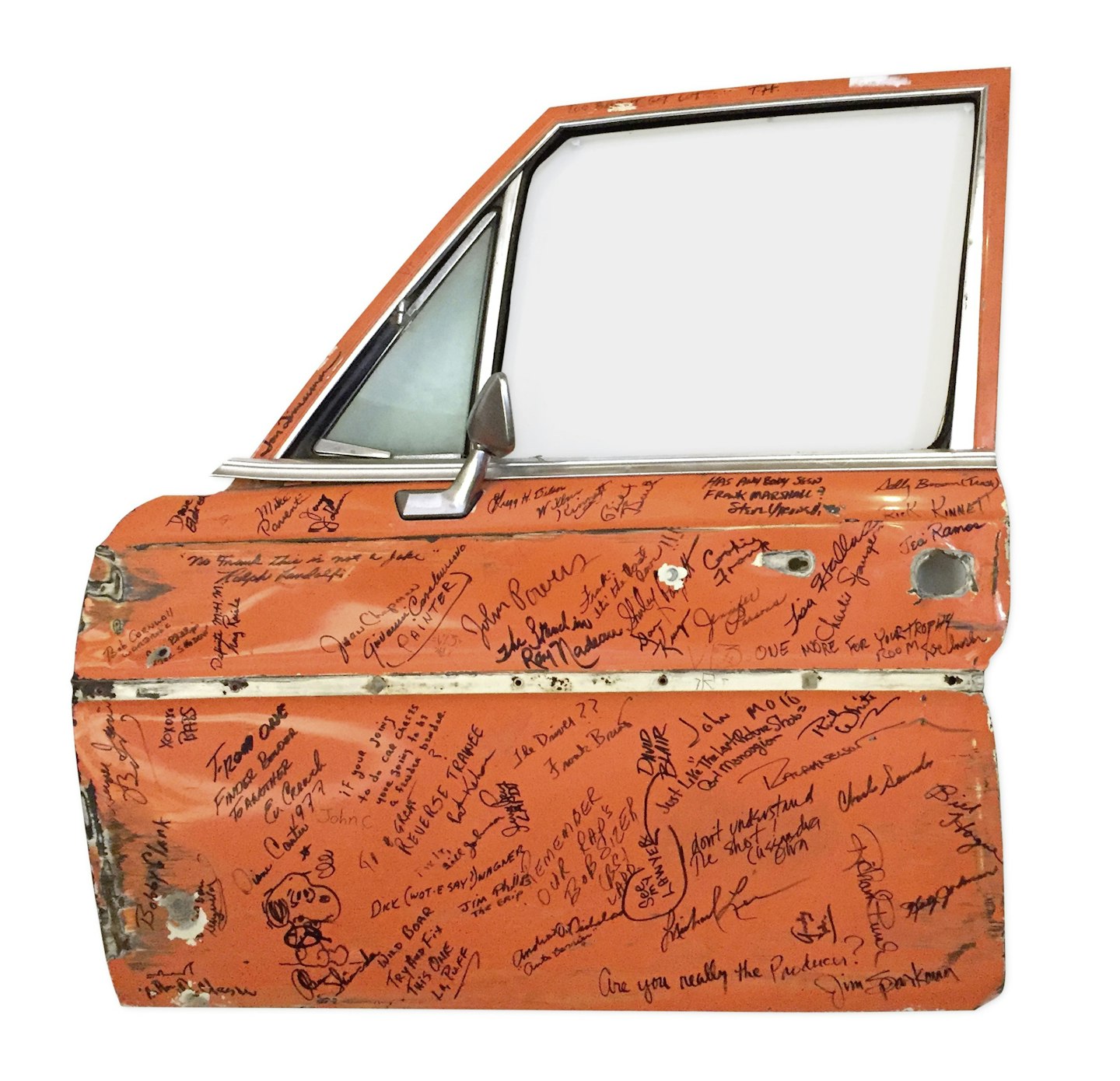
Hill: [laughs] That’s from one of our big scenes, the ‘Exhibition’ [where The Driver proves his mettle to a gang by screeching around a parking garage at high speed]. That’s the Mercedes door. That scene always got a reaction.
Wright: The Driver wasn’t commercially successful at the time, but when I was a teenager I had no knowledge of that. At no point until talking to you was I even aware it was a flop.
Hill: The movie actually got a very good reception in Europe, critically. I don’t think you can say the movie did commercially well anywhere, except Japan, where I believe it did reasonable business. It did not find an audience.
Wright: To me, especially for your second movie, it’s incredibly confident in terms of state-of-the-art action. Unlike a lot of contemporary action films, it’s geographically correct and spatially aware. Were you proud of it at the time?
Hill: There’s no simple answer to that. You’re a filmmaker. You start out with a big vision, a big appetite, a dream. At the end of the day they all fall short of the dream, in my opinion. But I certainly thought I’d done a good, professional job in the straightforward sense. I knew when I was getting ready to do the movie that I was taking a chance. This was not meant to be an everyday action movie. I was trying to do something a little more, or a little less, but I was trying to do something else. When the movie came out, I was already making another movie [The Warriors], so I had a parachute on. You never know. You know this very well, it’s an odd way to be making a living. If they decide they don’t like you anymore, the phone may not ring.
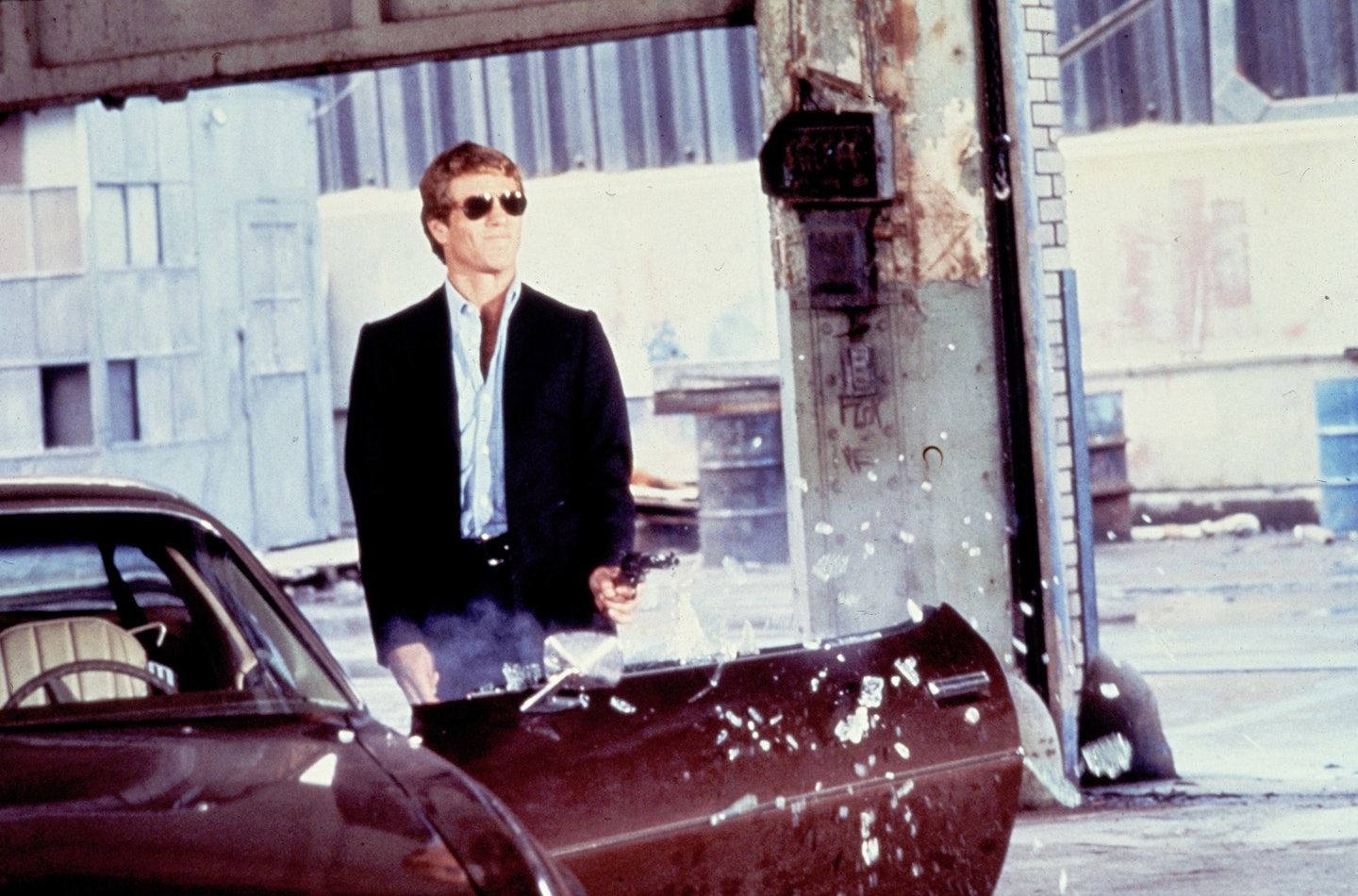
Wright: One of the things that is amazing about your scripts is the way you write. There’s almost a beat-poetry element to the stage direction. I actually read The Driver screenplay before I started writing my movie because I wanted to know, how do you write a car chase? I have to write this thing in words which is only going to be really exciting in action on screen. However, you really write action beautifully. It’s almost like little haiku of action.
Hill: You’re probably too kind in your assessment. When I was beginning as a writer, there was a bland Hollywood style that everybody seemed to appropriate for their scripts. I had the temerity to try to do a little more. I wasn’t first, I don’t think. Maybe I pushed it a little further than some of the others.
Wright: [producing the screenplay for The Driver from his bag] This is one I got from the library at CAA. What’s amazing is you have an entire page of stage directions, which is usually a no-no, but the way you laid it out is thrilling. It’s unusual to see a page like that in contemporary screenwriting.
Hill: I thought that approach made people read with greater intention. It’s spare in detail but written to dramatic effect. You could maybe capture the mind of the reader a little better.
Wright: It’s interesting to me that you were the second AD on Bullitt, and that’s obviously a major car-chase film.
Hill: I wasn’t in charge of anything creative on Bullitt, but I was scared to death! I was there for every shot.
Wright: Scared to death in what sense?
Hill: It was my job to set background and also to set it up with the police. We had to organise every shot so people wouldn’t wander out into the middle of the street and be hit.
Wright: Mown down by a Mustang!

Hill: Right. So every time we did a shot I was scared to death. I can’t tell you how many times I’d need to grab people that were innocently trying to cross the street or got tired of waiting. I was afraid something would go tragically wrong, which gave me a very different perspective when I got to direct a car chase myself.
Wright: What, if anything, did you learn from seeing Peter Yates do that movie?
Hill: In the simple technical sense, I was amazed at how much time and effort was committed to shooting from inside the cars. The chase took, if I remember correctly, a little over two weeks.
Wright: I can say with certainty that setting car mounts is no quicker today. I stood there at the side of a road going, “How long’s it going to be, guys? An hour? Really? I’m ready!”
Hill: Then I would go to dailies and quickly realise how wrong I was. What made the Bullitt chase remarkable was not just stunts. It was the technique of shooting from inside. You really felt it was a rollercoaster ride as well as something you were observing. I made damn sure that when I was doing The Driver I filmed an enormous amount of inside shots.
Wright: The opening chase, shot right outside this hotel, is all rear-mounted, locked cameras, or the front-point-of-view camera, locked to the rear-view mirror. It’s always going with the car and his point of view of the police, seeing it from the getaway car.
Hill: Mirror shots.
Wright: Very tricky things to do.
Hill: What nobody had really done at that time, or I was unaware of it if they had, was a big chase at night. You have to light the streets as well as do all the maps and that business. It was a rough undertaking. The chases were all done at the end of the film. We shot the drama, then we shot the chases.
Wright: So you could build up to it?
Hill: We wanted to get the day stuff out of the way and then kick over to nights. I thought doing them at night would be very much more in the spirit of what the storytelling wanted to be. It’s not meant to be a realistic depiction of what real criminals are like, or what real life in the city was like. I was not interested in any of that. By the way, the first chase was, in my opinion, kind of a failure. It was meant to lead up to a much more spectacular finish.
Wright: With him driving against the cops.
Hill: The night we were to shoot the end of that was the last night of the movie. An electrician sadly fell off a roof and was terribly hurt. Went to the hospital. Because that happened, we just cobbled a little thing together and I never really got the chance to come back and shoot it again. It was meant to be a much bigger version of that. It was a sad thing. Whereas I think what we called the Exhibition, the thing with the Mercedes in the garage, and the end chase with the pick-up truck, they’re as fully realised as I could get them to be.
Wright: Before you started directing, the other credit that has some bearing on this movie is writing The Getaway for Sam Peckinpah. How did you come to do that?
Hill: Polly Platt read one of my scripts and recommended me to Peter Bogdanovich. Peter had been hired to direct The Getaway and he hired me to co-write with him on the script. When I was hired, he was in the last month of prep on What’s Up, Doc?. He started shooting that and then I was up in San Francisco again.
Wright: All these movies have action scenes on hills in San Francisco!
Hill: It didn’t work out with Peter. I never really understood it. The official version was availability. I think Steve [McQueen] wasn’t happy Peter was doing another film ahead of his film. I don’t know.
Wright: How did you get to work with Sam Peckinpah?
Hill: I was told, “Just keep writing, let’s get a draft.” Frankly I was in no position to walk away in a huff. I worked in splendid isolation for another five weeks, did a first draft. Steve wanted to do it and, of course, Steve wanting to do it meant the movie was going to get made. Steve had just been working with Sam…
Wright: On Junior Bonner.
Hill: Yep. They had gotten along. Sam was also in post on Straw Dogs, so he was very busy. But I thought he did a wonderful job on The Getaway. And Steve was terrific in it. The picture came out and critically it was not well received, but it was a huge commercial success. It was really how I got to be a director; the fact it had done so well put me in line to get a shot.
Wright: Had you written The Driver at this point?
Hill: Oh, no.
Wright: Hard Times was written first?
Hill: I got a job with Larry Gordon, who I’d known a bit. He made a deal over at Columbia. He wanted to do something about these guys who did this unofficial fighting in back alleys and warehouses. I found that subject appealing, of course, given my nature. I rewrote that script rather extensively and liked working with Larry very much. The idea that [The Driver] would be set around a guy who was a professional driver, that was Larry’s. That started the wheels turning.
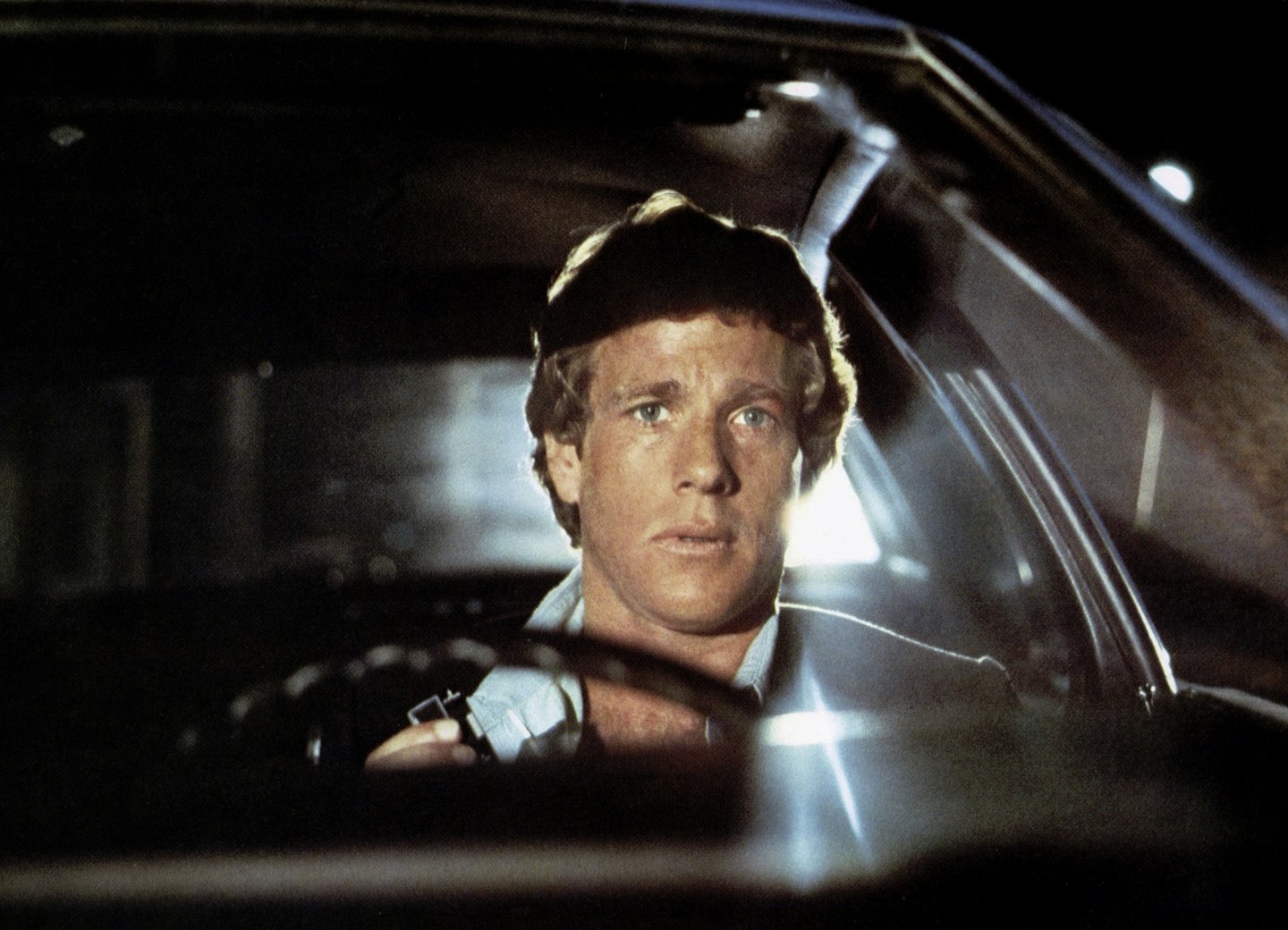
Wright: I guess there had been films about bootleggers before, but nothing specifically about a getaway driver.
Hill: Right. So I sat down and it seems like I wrote it over the summer of 1975. We had finished Hard Times, but there was a long lag time before the studio put the movie out. They wanted to hold it because [Charles] Bronson had made several other films, and they were in the pipeline ahead of ours. So I started writing The Driver.
Wright: The movie — and you’ll think I’m overpraising it again, but I’ve got you captive here so I’m going to do it — is as precise as if the main character were making it. When I think of the ‘Walter Hill style’, I think of The Driver. Maybe because it’s so clean and simple and pure.
Hill: I would say I never tried to screw anything that tight again. I now like everything to be a little looser around the edges, as we say.
Wright: It was written for Steve McQueen. Or you certainly had McQueen in mind.
Hill: I thought he could play it tremendously well, absolutely.
Wright: Ryan O’Neal is a very different presence from Steve McQueen. Even though I know it wasn’t your intention, one of the things that is so enigmatic about the movie and to me really makes it, is O’Neal. Obviously Steve McQueen would have been great, but you know what that movie would have been. It becomes a much more beguiling movie with Ryan O’Neal in the lead.
Hill: I remember I was so pleased with Ryan in the movie and I was very disappointed that people didn’t particularly give him any credit for what he did. To me, he’s the best he’s ever been. I cannot imagine another actor. When you don’t get who you want, sometimes you really do get lucky.
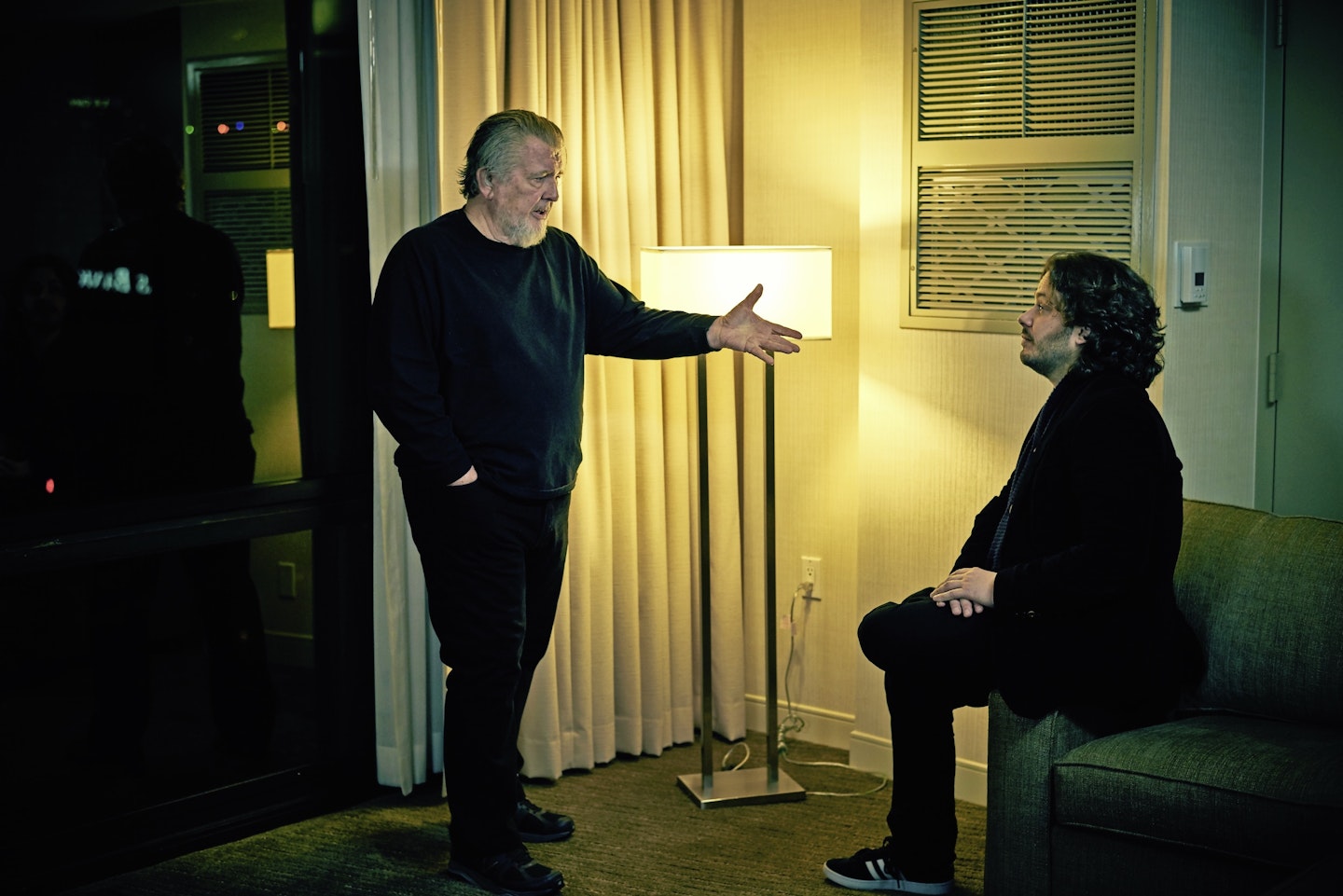
Wright: How close did Steve McQueen come?
Hill: I sent it to him and he said, “Nah, I don’t want to do another car thing.”
Wright: Too many lines! What is it The Driver says, 350 words total?
Hill: I’ve no idea. Not many, I’ll say that.
Wright: How did you go from McQueen to Ryan O’Neal?
Hill: There was a list. There’s always a list. Because he was a big star and I had done a successful film with him, we had to go to Charlie [Bronson]. Charlie was quite mad at me, so it didn’t get very far. He thought I had edited Hard Times in a way that had not favoured Jill Ireland [Bronson’s co-star, and wife]. In a sense he was correct, so this was an area of tension, shall I say.
Wright: He seems like too much of a bruiser to be a getaway driver.
Hill: I never thought it was a good idea. And I never thought he’d do it. Ryan was an interesting idea and I was delighted when he said he’d do it. I thought we pulled it off, but I’m sorry to say people didn’t see that, particularly at the time.
Wright: Did you change the script for Ryan?
Hill: To the best of my memory it remained the same. I changed some dialogue for Bruce. I wanted Bruce’s personality. Audiences get nervous about movies that don’t have a lot of dialogue. They like dialogue. These long, visual sequences that are the delight of film directors are not always audience-friendly.
Wright: You’re making me nervous, Walter.
Hill: They like a balance. I wanted Bruce to very much offset the distance of The Driver.
Wright: He’s an incredibly talkative foil. He has probably 80 per cent of the dialogue in the movie.
Hill: The studio recommended Robert Mitchum and I thought Mitchum would be a great idea. I went over to Talbot Productions, his company. He was in an office on Sunset, right where it bends into Beverly Hills. He had two sofas and in between there was a little refrigerator. He would reach in and pull out a bottle of vodka. And this was noon. So I had a long session with him and the vodka. Then he called about a day later and said, “Nah.”
Wright: I love Robert Mitchum, but I cannot imagine anyone playing that part except for Bruce Dern.
**Hill:**I can’t either.
Wright: I love the ending. The cop doesn’t arrest him even though he has enough evidence to. The Detective lost the game and The Driver gets to walk away.
Hill: Couldn’t say it better myself.
Wright: One of my favourite things in the movie is the magical jump-cut at the end, where the cops are all suddenly standing there in the train station and The Driver doesn’t hear them come in. That’s a little bit of magical realism.
Hill: My producer and I had some interesting conversations about that.
Wright: Did Larry think it was too comical?
Hill: He thought it was too weird.
Wright: “How the fuck did 20 cops get in here without making a sound?”
Hill: He said, “Can’t we have a lot of rustling of feet and things like that?” I said, “Well, he’d look up, then.”
Wright: What are your memories of the actual shoot? Something magical starts to happen when you’re doing a film that’s all nights.
Hill: You get into a weird zone.
Wright: Where were you living at the time?
Hill: I had a small house up in the hills. I remember people always being worried that I’d fall asleep driving home and crash and die.
Wright: It’s tough after night shoots.
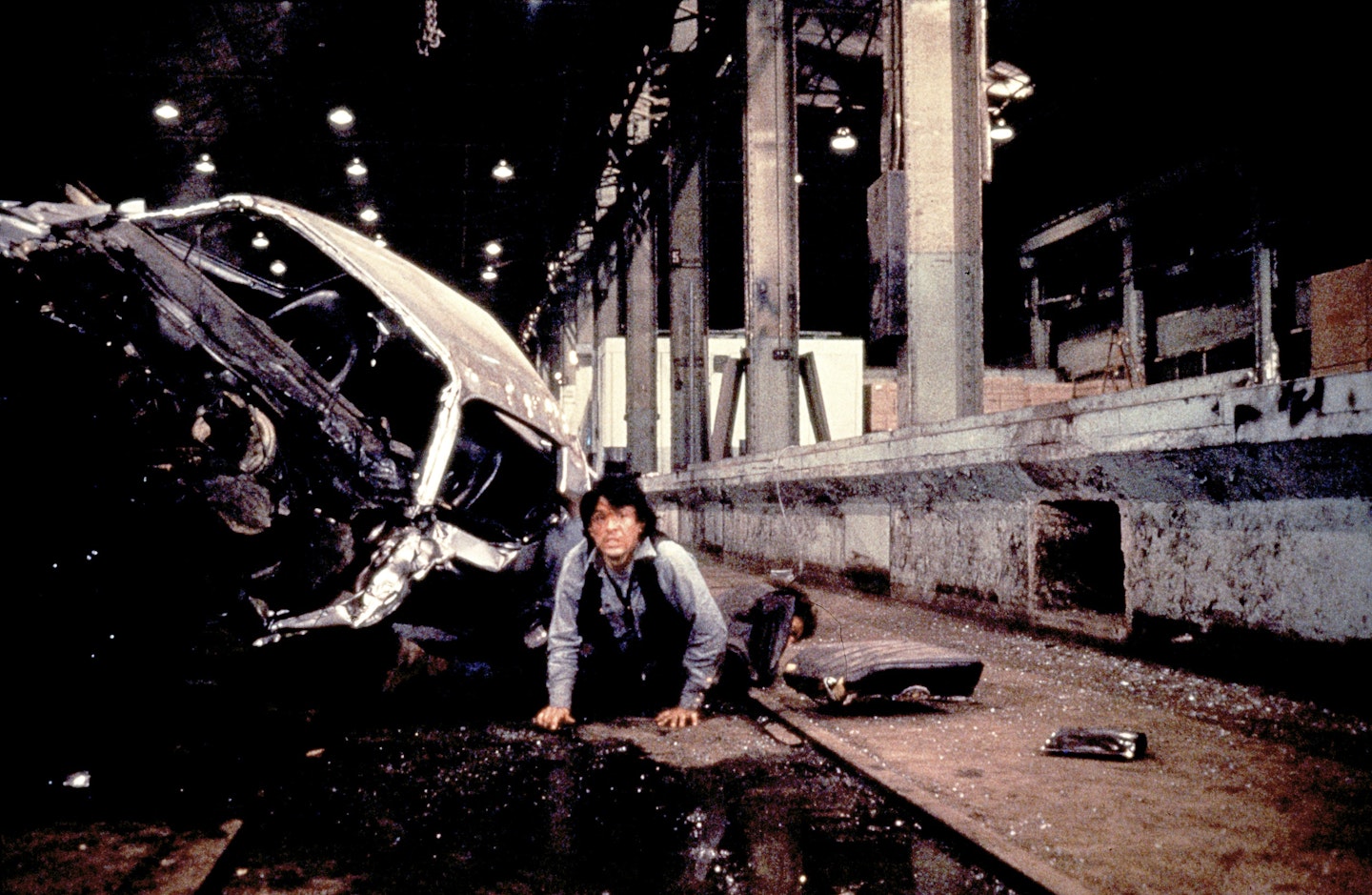
Hill: It is. It’s like you’re swimming underwater or hypnotised. And I’m a person that stays up late and wakes up early. But staying up night after night after night really threw me out. You make decisions you cannot explain. You just intuit.
Wright: It makes sense to you at four in the morning.
Hill: It’s probably hell for anyone around you. But it’s a question that anybody who gets a chance to direct a movie probably comes to, I think, which is: is it all choice and rational thought? Or at what point do you let your instincts take over? Which is better? There isn’t any answer.
Wright: There’s that quote about the Velvet Underground Andy Warhol album — nobody bought it at the time, but the people who did buy it went on to form a band. I feel the same way about The Driver. The people who were watching are directors — we watched that movie and were excited and inspired. And I had to make a movie called Baby Driver just to prove to you that The Driver is influential.
Hill: [laughs] That’s all too kind.
Wright: You can’t outrun it forever!
With that, the two directors are called away to be snapped by Empire_’s photographer. While they pose, they chat about — among other things — Hill’s return to the Westin Bonaventure (recently bought by the Marriott Group) for the first time in nearly 40 years, and the 16mm print of a TV version that Quentin Tarantino owns. There’s a definite sense that Wright’s campaign of attrition is working, that at last Hill is learning to appreciate the hidden classic on his CV. “That somebody can remember something you did 35 years ago and still see some value in it?” says Hill. “It makes an old man happy.”_
